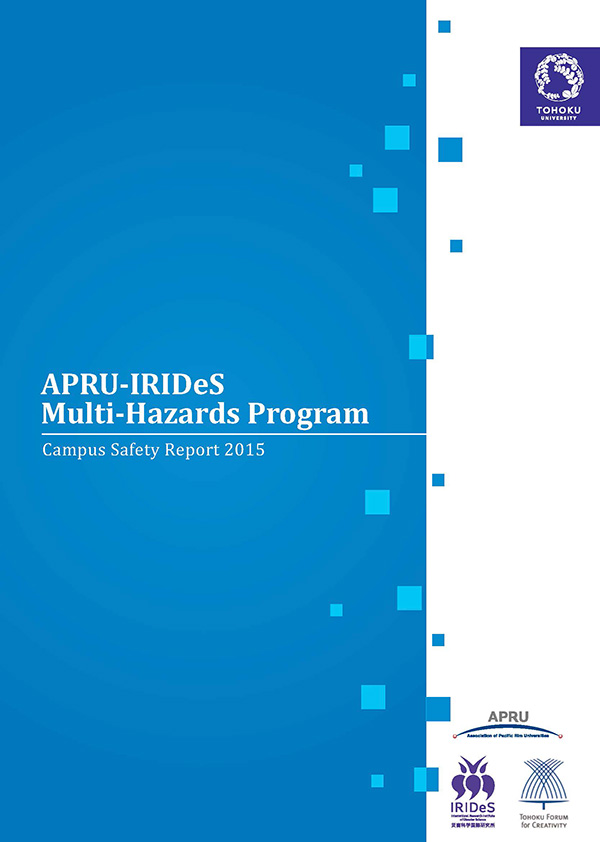In universities, the number of students, faculty members, and staff is much larger than lower schools. If universities are stuck by a disaster, especially a large disaster, without adequate risk reduction measures, the damage and impacts including assets, buildings, and human lives, can be enormous. Universities must prepare for these emergencies and implement and appropriate response action at the initial stage. To implement “safe campus”, universities are required to maintain an environment where students can continue their studies and research activities. They must also promptly respond to disaster, make regular risk assessment son campus, and try to eliminate and/or reduce risks, if identified. “Campus safety”, in this context, focuses only on “safety” against natural disaster, excluding manmade disaster, crime and health issues such as pandemics.
The APRU-IRIDeS Multi-Hazards Program conducted the campus safety survey among the APRU member universities to collect current information on the status of the preparedness capacity to natural disaster on campus, including their activities and initiatives.
Furthermore, the survey requested the Universities to identify the challenges and recommendations for the future preparedness plan. 22 universities (49%) from 9 economies (Australia, China, Chinese Taipei, Japan, New Zealand, Russia, Singapore, Thailand and USA) submitted responses. The survey comprises six topics that include governance actions, risk assessment, disaster preparedness mechanism and capacity, response capacity, support system for students, faculty members and staff, and data preservation.
The results showed that the area of “Risk Assessment” requires more attention and effort. In addition, “early warning and alert systems” and “information and support to foreign students” also need to be strengthened. However, many Universities already have a mechanism in place to establish a counter-measure office and have developed a response manual and plan. In addition, physical structure areas, such as disaster-resistant structure, emergency communication, and emergency stockpiles, have been progressed compared to other areas. Furthermore, the support toward psychosocial aspects has been provided after disasters, and many Universities have policies to provide such support.
Many universities requested the support from universities by sharing tools and good practices. To respond to such needs, the MH Program plans to organize the Campus Safety Workshop in the second half of 2015 to share the disaster preparedness plan of each university and discuss how to develop or improve it.


